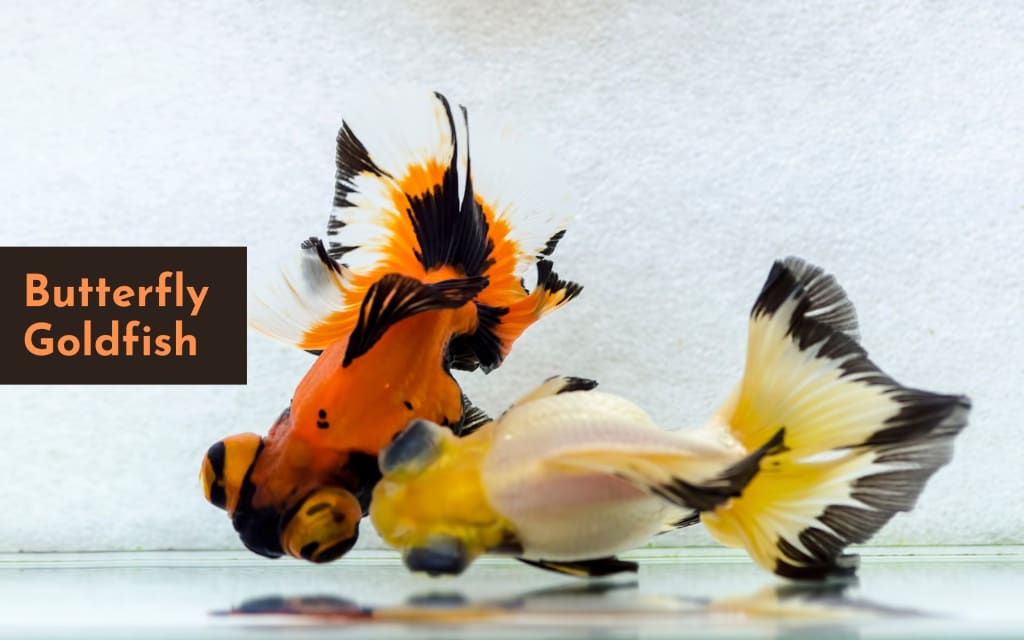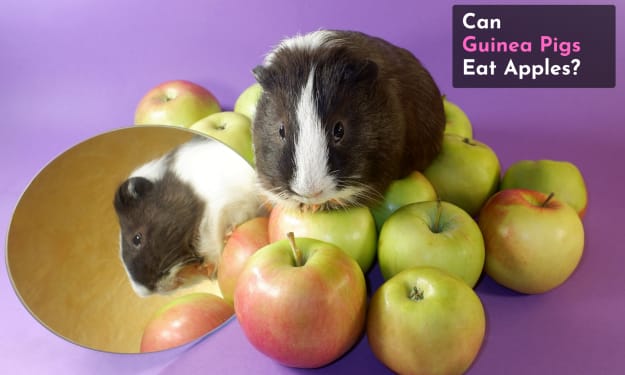Butterfly Fancy Goldfish
How to Breed and Raise Butterfly Goldfish

Butterfly fancy goldfish is one of the most beautiful and sought-after goldfish varieties. Butterfly fancy goldfish have protruding eyes and are considered a variant of the butterfly telescope goldfish. Their stunning colors, delicate fins, and graceful movements make them popular among aquarium enthusiasts. Breeding and raising butterfly goldfish successfully can be a rewarding experience. Still, it also requires careful planning, attention to detail, and a commitment to providing the best care for these delicate creatures.
Breeding and raising butterfly fancy goldfish successfully is necessary not only for the health and well-being of the fish but also for maintaining the genetic diversity and beauty of the species. By following best practices for breeding and raising these fish, you can help ensure their continued popularity and enjoyment for years to come. This guide will cover the basics of breeding and raising fancy butterfly goldfish, from creating the perfect habitat to selecting the right pair for breeding, caring for fry, and marketing and selling your fish.
Understanding Butterfly Fancy Goldfish
Butterfly fancy goldfish, also known as butterfly tail goldfish, are highly prized for their unique and striking appearance. They are characterized by their long, flowing fins, which resemble butterfly wings and give the fish their name.
These fish are available in various colors, including red, orange, yellow, black, and white. Some Butterfly fancy goldfish also have metallic or iridescent scales, which can create a shimmering effect in the water.
Regarding behavior, they are generally peaceful and can be kept with other non-aggressive fish. They are also relatively easy to care for, although they have some specific requirements regarding water quality, temperature, and diet.
There are several varieties of butterfly fancy goldfish, each with unique characteristics and features. Some of the most popular types include:
- Black Butterfly Fancy Goldfish: This variety is distinguished by its black coloration and delicate, flowing fins.
- Red and White Butterfly Fancy Goldfish: This variety is characterized by its red and white coloration, which can create a striking contrast in the water.
- Calico Butterfly Fancy Goldfish: This variety is known for its multi-colored scales, including shades of orange, white, black, and red.
Overall, butterfly tail goldfish is a beautiful and fascinating species that can make an excellent addition to any aquarium. You can better care for and appreciate these fantastic fish by understanding their characteristics, behaviors, and varieties.
Creating the Perfect Habitat
Creating the perfect habitat for butterfly fancy goldfish is crucial to their health and well-being. These fish have specific requirements regarding water quality, temperature, and tank setup.
They require a large tank to accommodate their size and swimming habits. Generally, you should have a minimum of 20 gallons of water per fish, although larger tanks are always preferable. The shape of the tank should also be considered, as these goldfish prefer tanks that are wider than they are tall to provide ample swimming space.
Butterfly fancy goldfish are sensitive to changes in water quality and temperature, so it's essential to maintain a stable environment for them. The ideal water temperature for these fish is between 65-72°F, and the pH should be 6.5-7.5. Regular water changes, filtration, and testing, are also necessary to maintain water quality and avoid the buildup of harmful toxins.
A sound filtration system is essential for maintaining a healthy and clean environment for your fancy goldfish. A filter should be able to circulate the entire volume of water in the tank at least three times per hour. In addition to filtration, aeration is vital for providing oxygen to the fish and promoting healthy gas exchange in the water.
Butterfly tail goldfish prefer a tank with plenty of hiding places and visual barriers. You can use plants, rocks, driftwood, and other decorations to create a natural-looking environment for your fish. Live plants are also a great addition to the tank, as they can provide oxygen and help regulate water quality. However, choose plants compatible with your tank's temperature and water conditions.
By creating the perfect habitat for your fancy goldfish, you can ensure they have a comfortable and healthy home. Paying attention to tank size, water quality, filtration, and decor can make all the difference in the health and well-being of your fish.
Pairing Butterfly Fancy Goldfish for Breeding
Breeding butterfly fancy goldfish successfully requires careful selection and pairing of the right individuals. Here are some factors to consider when selecting and pairing these goldfish for breeding:
Choosing the right pair: When selecting a couple of butterfly fancy goldfish for breeding, it's important to choose breeders that complement each other in size, coloration, and fin shape. Selecting fish in good health and free from any signs of disease or deformities would be best. Choosing fish from different genetic lines is best to ensure genetic diversity and avoid inbreeding.
Age and size considerations: They should be at least one year old and have reached sexual maturity before being bred. The female should be slightly larger than the male, as this can increase the chances of successful breeding. However, the size difference should be manageable, as this can injure the female during spawning.
Signs of readiness for breeding: When a female goldfish is ready to breed, she will develop a fuller, rounder abdomen, and her vent will become slightly redder. Males may also develop small white bumps on their gill covers, known as breeding tubercles. These are a sign of readiness to breed.
By carefully selecting and pairing butterfly fancy goldfish for breeding, you can increase the chances of successfully spawning and producing healthy offspring. Be sure to choose fish that have reached sexual maturity. Watch for signs of readiness for breeding to ensure that you choose the right time to introduce your pair to the breeding tank.
Breeding Behavior and Techniques
Breeding butterfly fancy goldfish can be a fascinating and rewarding experience. Before spawning, Butterfly tail goldfish will engage in courtship behavior that involves chasing, nipping, and flaring their fins. The male will typically chase the female around the tank, nudging her abdomen to stimulate egg release. Once the female releases her eggs, the male will fertilize them. Spawning can result in a large number of eggs, which can be anywhere from a few hundred to several thousand, depending on the size of the female.
After spawning, remove the adult fish from the breeding tank, as they may eat the eggs or fry. The eggs will hatch in 2-7 days, depending on the water temperature. Once the eggs have hatched, the fry will feed on their yolk sacs for the first few days before transitioning to newly hatched brine shrimp or commercial fry food. Maintaining good water quality and providing food for the fry is necessary to ensure their health and growth.
When the fry is large enough to be handled, usually around 1-2 weeks old, they can be separated from their parents and moved to a grow-out tank. The grow-out tank should be kept clean and well-aerated, and the fry should be fed small, frequent meals throughout the day. Monitor the water quality in the grow-out tank to ensure the fry's health and growth.
By understanding their courtship and spawning behaviors and providing appropriate care for the eggs and fry, you can produce healthy offspring and continue the legacy of these beautiful fish.
Raising Fry
Raising butterfly fancy goldfish fry can be challenging but rewarding. The first few weeks of a fry's life are critical for its development. Feed them small, frequent meals throughout the day. You can feed them a mixture of freshly hatched brine shrimp, commercial fry food, or crushed flakes. It's also important to keep the tank clean and well-aerated and to maintain good water quality.
The tank setup for raising butterfly tail goldfish fry should suit their size and needs. A 10-20 gallon tank is usually sufficient for a small batch of fry. The tank should be well-filtered and aerated, and the temperature should be between 75-80°F. You can provide hiding places for the fry by adding plants or other decorations to the tank.
As the fry grows, you may notice its appearance and behavior changes. They will develop their characteristic coloration and fin shape and become more active and playful. Monitor their growth and development to ensure they are healthy and reaching their milestones. At around 6-8 weeks old, you can move the fry to a larger tank.
Raising these goldfish requires careful attention to their care and feeding. You can grow healthy and beautiful butterfly fancy goldfish by providing a suitable tank setup and environment and monitoring their growth and development.
Feeding and Nutrition
Proper feeding and nutrition are crucial for the health and growth of butterfly tail goldfish. Butterfly fancy goldfish are omnivores, and their diet should include flakes, pellets, frozen or live foods, and vegetables. You can feed them high-quality commercial foods, such as flakes or pellets, and supplement their diet with live or frozen foods, such as brine shrimp, bloodworms, or daphnia. You can also feed them vegetables, such as peas, spinach, or lettuce, which can help digestion.
Feed Butterfly Fancy Goldfish small, frequent meals throughout the day rather than one large meal. This will prevent overfeeding and ensure the fish get the nutrients they need. A general rule of thumb is to feed them as much as they can eat in 2-3 minutes, 2-3 times a day.
When feeding butterfly fancy goldfish, consider the food's quantity and quality. Overfeeding can lead to health problems, such as swim bladder issues, while underfeeding can stunt their growth and affect their overall health. Provide high-quality, nutrient-rich foods and avoid feeding them foods high in fillers or preservatives.
Feeding and nutrition are essential components of butterfly fancy goldfish care. You can ensure your fish are healthy and thriving by providing a varied and balanced diet and monitoring their feeding schedule and food quality.
Common Health Issues and How to Prevent Them
Like all fish, butterfly fancy goldfish are susceptible to various health issues. Some common health issues for butterfly tail goldfish include swim bladder problems, fungal infections, bacterial infections, and parasites. Symptoms of these issues can include lethargy, loss of appetite, discoloration, abnormal swimming behavior, and physical abnormalities.
Maintaining a clean and healthy tank environment is the best way to prevent health issues in butterfly fancy goldfish. This includes regular water shifts, proper filtration and aeration, and monitoring water quality parameters such as ammonia, nitrite, and nitrate levels. Quarantining new fish before adding them to your tank can also help prevent the spread of disease.
Taking action quickly is vital if you notice symptoms of a health issue in your butterfly fancy goldfish. Consult with a veterinarian or fish health specialist for proper diagnosis and treatment. Treatment may involve medication, water changes, or other interventions to address the underlying cause of the issue.
Marketing and Selling Your Butterfly Fancy Goldfish
If you want to sell your butterfly fancy goldfish, word of mouth is one of the most effective ways to market these fish. If you have a strong network of fellow fish hobbyists, consider sharing information about your fish and their unique characteristics. You can also attend fish shows or events to showcase your fish and network with potential buyers. Social media platforms like Facebook or Instagram can also help promote your fish and connect with potential buyers.
When selling your butterfly tail goldfish, finding the right market is essential. Fish hobbyists may be willing to pay a premium for unique or rare varieties. In contrast, others may be more interested in healthy, well-cared-for fish suitable for their existing tank environment. Consider your target market and tailor your marketing and pricing strategies accordingly.
When pricing your butterfly fancy goldfish, consider their rarity, size, and overall health. Price your fish competitively while ensuring you are fairly compensated for your time and effort in breeding and caring for them. Be transparent about your pricing and associated costs, such as shipping or handling fees.
Conclusion
Breeding and raising butterfly fancy goldfish can be a rewarding and fascinating hobby. By understanding their unique characteristics and behaviors, creating the perfect habitat, selecting and pairing fish for breeding, and raising fry to maturity, you can help ensure the health and vitality of your fish and produce beautiful specimens to share with others.
Ultimately, the key to successful breeding and raising butterfly fancy goldfish is a combination of knowledge, patience, and dedication. By following the guidelines outlined in this guide, you can ensure the health and happiness of your fish and enjoy the beauty and wonder of these fascinating creatures for years to come.
👉 Do you have any additional insights or questions? We highly value your feedback. Please share your thoughts by leaving a comment below.
✅ Subscribe to our newsletter, and don't miss out on future blog posts with valuable insights.
About the Creator
Amir Hossain
I blog on everything and anything— hoping my blogs will make your days a bit happier!






Comments
There are no comments for this story
Be the first to respond and start the conversation.